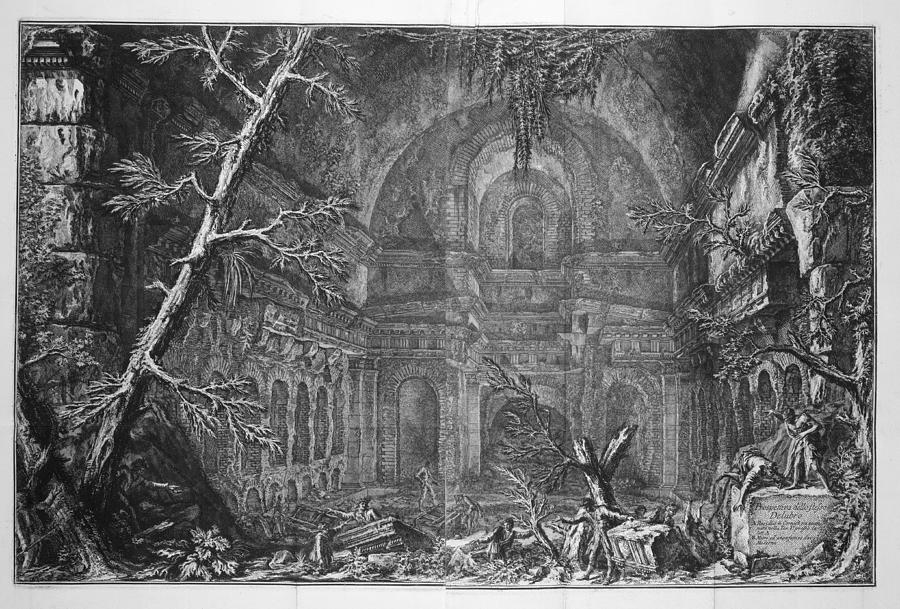
6 At thirty two, Piranesi married Angela Pasquini. 5 Soon after his arrival in Rome, Piranesi apprenticed himself briefly to the Sicilian Giuseppe Vasi (1710-1782) the most famous producer of etched views of Rome, which he supplied to Grand Tourists as a lasting souvenir. In his early years in Rome, he published almost no artwork and spent the majority of his time observing and sketching ancient ruins and styling imaginary reconstructions. During his time in Rome, he drew everything: temples, palaces, bridges, aqueducts, and all of the fragments of Rome’s past which were, at the time, only just being uncovered and restored.4 At twenty-five (1745), Piranesi received an offer of work from a publisher in Rome and returned to settle there for life. Piranesi was captivated by the antiquity of Rome from a very young age, visiting the ancient city as an inexperienced draughtsman aboard an ambassadorial train.
PIRANESI ART HOW TO
Piranesi learned to perfect the art of stage design, discovering how to render light and shade with dramatic effect, draw architecture from unique angles, and take risks with perspective. 2 The Venice in which Piranesi grew up introduced him to the architecture of the theatrical stage through the various productions he worked on, an experience that would be influential to the style he developed. 1 Piranesi’s family expected him to be an architect, and his upbringing in the architectural world of Venice was foundational in his future achievements. His father was a stonemason and a master builder, and his mother was the elder sister of Matteo Lucchesi (1705-1776), a renowned architect and engineer who had connections in aristocratic circles. Giovanni Battista Piranesi (1720-1778) was born at Mogliano Veneto in Italy.


"Piranesi Unbound," a book associated with the exhibition written by the curators, is available from the Princeton University Press. The exhibition is curated by Heather Hyde Minor, professor, University of Notre Dame, and Carolyn Yerkes, associate professor, Princeton University. To make books, Piranesi had to think as a creator of prints, writer of texts, page designer, and printer-and sometimes as a publisher, dealer, and salesman. What did these volumes mean to him, who did they bring into his world, and how can the process of making them be understood throughout his career? This exhibition explores Piranesi’s books as the central thread that connects all spheres of his enormous ambition. Long, erudite, and sometimes convoluted, these texts were written with the help of humanist friends who supplied him with classical knowledge. More often than not, he combined his prints with letterpress texts. He etched and engraved copperplates, and sometimes he sold impressions from these as single sheets. This circumstance forced Piranesi to work and think collaboratively. Making images and making texts were two separate processes, discrete enterprises that required different printing equipment and skills. To make these books, Piranesi had to think in units of pages. The pages he crafted became his most powerful and creative art form. Over the course of his career, Piranesi created twelve volumes that combine printed text and images. Finding no opportunities to build, he began to make paper monuments in the form of books. Giovanni Battista Piranesi (1720–1778) was born in Venice and came to Rome in 1740, seeking to become an architect. 8, 2021.Ĭelebrating Princeton University’s collection of Piranesi works, the exhibition draws from the Library's Special Collections including Graphic Arts, Numismatic, and Rare Books the Marquand Library of Art and Archaeology and the Princeton University Art Museum. The exhibition also features a number of loans from national and international collections, including several works that will be on display for the first time. "Piranesi on the Page" tells the story of how Giovanni Battista Piranesi, the foremost printmaker in 18th-century Europe, made the book the center of his artistic production. The exhibition opened in the Ellen and Leonard Milberg Gallery, located in the Firestone Library lobby, on Oct. Reservations for public visitors are no longer required.Īll visitors must be fully vaccinated and wear face coverings. The exhibition is open daily from noon to 6 p.m.


 0 kommentar(er)
0 kommentar(er)
